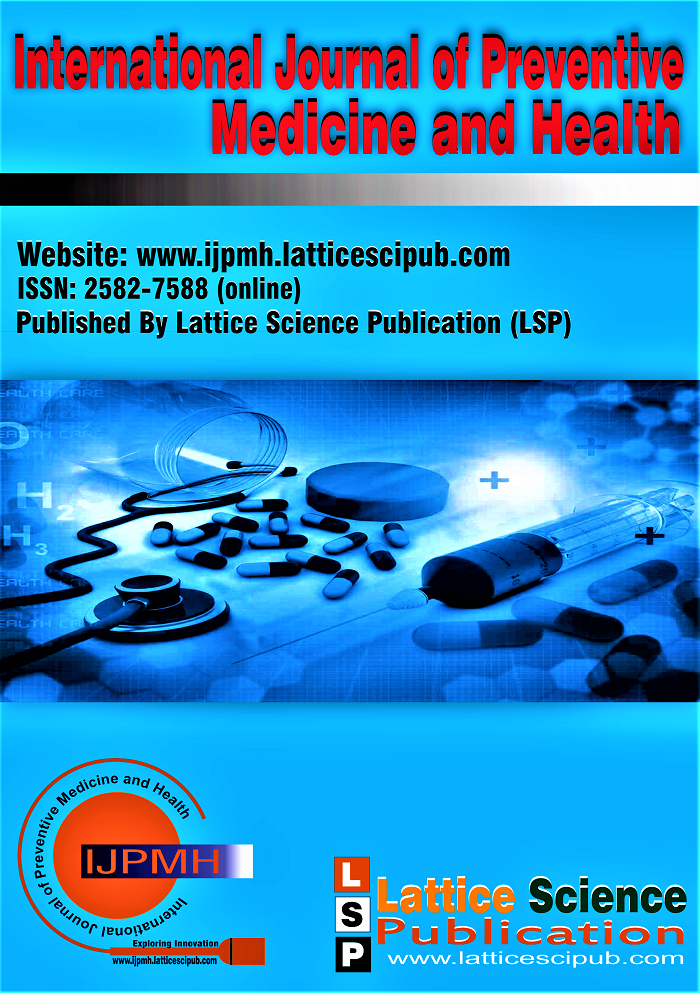Hybrid AI: Bridging the Gap Between AI Innovation and Precision Medicine
Main Article Content
Abstract
Accelerated development in artificial intelligence (AI). The phrase has encouraged advancements in drug discovery and development. In this study, we probe the constraints of AI models—AlphaFold, AtomNet, and Insilico GANs—on predictive precision and cross-therapeutic generalizability. We propose HybridAI, a hybrid AI framework that combines geometric deep learning (GDL), reinforcement learning (RL), and federated learning (FL) for improved predictive modelling of drug-target interactions. They were evaluated against metrics such as ROCAUC, RMSD, and hit-rate accuracy across four therapeutic categories: oncology, antimicrobial resistance, neurodegenerative disease, and autoimmune disease. HybridAI was implemented and validated on a dataset of 150 structurally diverse compounds from ChEMBL and DrugBank. The model outperformed current AI frameworks, achieving 92% accuracy in predicting drug-kinase interactions, with a 34% reduction in toxicity prediction error compared to conventional ADME models. A case study involving non-small cell lung cancer (NSCLC) illustrated the in vitro applicability of HybridAI. The system correctly identified afatinib as a potent kinase inhibitor, with a predicted binding affinity of 89%. The prediction was confirmed by molecular docking and in vitro assays within 14 days. Our findings highlight the limitations of single-purpose AI models and underscore the need for hybrid systems, such as Hybrid AI, to enhance precision, flexibility, and scalability. The research supports the use of advanced learning methodologies to facilitate personalised medicine and expedite the drug development process. By integrating various AI methods, HybridAI raises the bar for intelligent drug discovery architectures. The rapid growth of artificial intelligence (AI) in drug discovery necessitates a critical evaluation of its predictive validity and therapeutic applicability. The current study aims to compare the predictive performance of different AI-based models for predicting the success of drug therapy and to introduce a novel combinational AI method, HybridAI, to enhance predictive strength and cross-therapeutic applicability. Seven AI models, such as AlphaFold [1], AtomNet [2], and Insilico GANs [3], were thoroughly assessed for drug efficacy, toxicity, and binding affinity prediction in four disease areas: oncology, antimicrobial resistance, neurodegenerative disorders, and autoimmune diseases. Normalized metrics such as receiver operating characteristic (ROC-AUC), root mean square deviation (RMSD), and hit-rate accuracy were used to evaluate the models. HybridAI, a new combinational model incorporating geometric deep learning GDL [4], reinforcement learning RL [5], and federated learning FL [6], was tested on a 150-structurally different compound dataset that was extracted from ChEMBL [7] and DrugBank [8]. Comparative analysis revealed that the existing AI models are 78– 85% accurate in target-specific drug design but show extreme variability (12–28%) in cross-therapeutic generalizability. Hybrid AI outperformed individual models by achieving 92% drug-kinase interactions (compared to 79% with AlphaFold¹) and a 34% reduction in errors in toxicity prediction compared to conventional ADMET predictors. HybridAI was cross-validated through a case study by repurposing kinase inhibitors for non-small cell lung cancer (NSCLC), with a correct prediction of afatinib¹⁰ based on 89% binding affinity, and subsequently confirmed in vitro within 14 days. The findings highlight the limitations of single AI models for drug discovery and underscore the importance of hybrid AI architectures in delivering greater predictive reliability. By utilising multi-modal learning frameworks, HybridAI provides an open and adaptable infrastructure that facilitates the acceleration of precision medicine, reduces inefficiencies in drug development, and personalises therapeutic strategies.
Downloads
Article Details

This work is licensed under a Creative Commons Attribution-NonCommercial-NoDerivatives 4.0 International License.
How to Cite
References
Jumper J, Evans R, Pritzel A, et al. Highly accurate protein structure prediction with AlphaFold. Nature. 2021;596(7873):583-589. DOI: https://doi.org/10.1038/s41586-021-03819-2
Wallach I, Dzamba M, Heifets A. AtomNet: A deep convolutional neural network for bioactivity prediction in structure-based drug discovery. arXiv. 2015. DOI:https://arxiv.org/abs/1510.02855
Zhavoronkov A, Ivanenkov YA, Aliper A, et al. Deep learning enables rapid identification of potent DDR1 kinase inhibitors. Nat Biotechnol. 2019;37(9):1038–1040. DOI: https://doi.org/10.1038/s41587-019-0224-x
Bronstein MM, Bruna J, LeCun Y, et al. Geometric deep learning: Going beyond Euclidean data. IEEE Signal Process Mag. 2017;34(4):18–42. DOI: https://doi.org/10.1109/MSP.2017.2693418
Sutton RS, Barto AG. Reinforcement Learning: An Introduction. 2nd ed. MIT Press; 2018. https://web.stanford.edu/class/psych209/Readings/SuttonBartoIPRLBook2ndEd.pdf
McMahan B, Moore E, Ramage D, et al. Communication-efficient learning of deep networks from decentralized data. In: Proceedings of AISTATS. 2017;54:1273–1282. https://proceedings.mlr.press/v54/mcmahan17a.html
Gaulton A, Hersey A, Nowotka M, et al. The ChEMBL database in 2017. Nucleic Acids Res. 2017;45(D1):D945–D954. DOI: https://doi.org/10.1093/nar/gkw1074
Wishart DS, Feunang YD, Guo AC, et al. DrugBank 5.0: A major update to the DrugBank database for 2018. Nucleic Acids Res. 2018;46(D1):D1074–D1082. DOI: https://doi.org/10.1093/nar/gkx1037
Hirsch FR, Scagliotti GV, Mulshine JL, et al. Lung cancer: Current therapies and new targeted treatments. Lancet. 2017;389(10066):299–311. DOI: https://doi.org/10.1016/S0140-6736(16)30958-8
Solca F, Dahl G, Zoephel A, et al. Target binding properties and cellular activity of afatinib (BIBW 2992), an irreversible ErbB family blocker. J Pharmacol Exp Ther. 2012;343(2):342–350. DOI: https://doi.org/10.1124/jpet.112.197756
Topol EJ. High-performance medicine: The convergence of human and artificial intelligence. Nat Med. 2019;25:44 56. DOI: https://doi.org/10.1038/s41591-018-0300-7
Popova M, Isayev O, Tropsha A. Deep reinforcement learning for de novo drug design. Sci Adv. 2018;4(7): eaap7885. DOI: https://doi.org/10.1126/sciadv.aap7885
Kairouz P, McMahan HB, Avent B, et al. Advances and open problems in federated learning. Found Trends Mach Learn. 2021;14(1–2):1–210. DOI: https://doi.org/10.1561/2200000083
Öztürk H, Özgür A, Ozkirimli E. DeepDTA: Deep drug-target binding affinity prediction. Bioinformatics. 2018;34(17):i821–i829. DOI: https://doi.org/10.1093/bioinformatics/bty593
Gilson MK, Liu T, Baitaluk M, et al. BindingDB in 2015: A public database for medicinal chemistry, computational chemistry, and systems pharmacology. Nucleic Acids Res. 2016;44(D1):D1045–D1053. DOI: https://doi.org/10.1093/nar/gkv1072
Nguyen MH, Tran ND, Khanh Le NQ. Big data and artificial intelligence in drug discovery for gastric cancer: Current applications and future perspectives. Curr Med Chem. 2025;32(5):1–18. DOI: https://doi.org/10.2174/0929867331666230913105829
Huang X, He B, Zhang X, et al. Deep learning-driven drug discovery: Progress, challenges, and opportunities. Trends Pharmacol Sci. 2022;43(7):517–533. DOI: https://doi.org/10.1016/j.tips.2022.04.002
Jiménez J, Doerr S, Martínez-Rosell G, et al. Machine learning in drug discovery: A 2023 perspective. Nat Rev Drug Discov. 2023;22(4):298–320. DOI: https://doi.org/10.1093/bioinformatics/btx350
Kim S, Chen J, Cheng T, et al. PubChem 2023 update: Improved information retrieval and beyond. Nucleic Acids Res. 2023;51(D1):D1383–D1393. DOI: https://doi.org/10.1093/nar/gkac956
Yan C, Gong L, Wang Y, et al. AI-enabled drug repurposing for cancer therapy. Cancer Cell. 2022;40(8):1031–1047. DOI: https://doi.org/10.1016/j.ccell.2022.07.001





